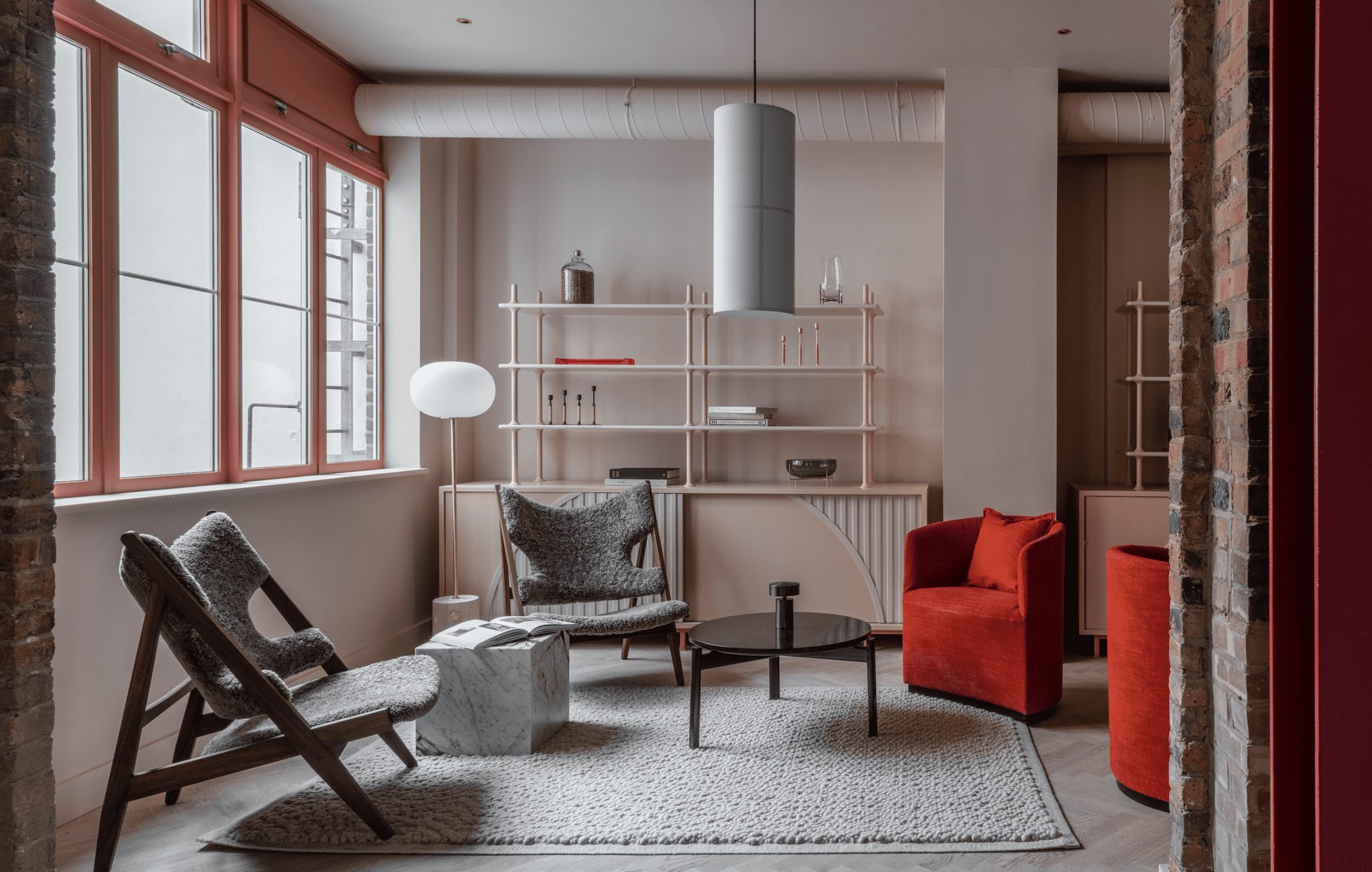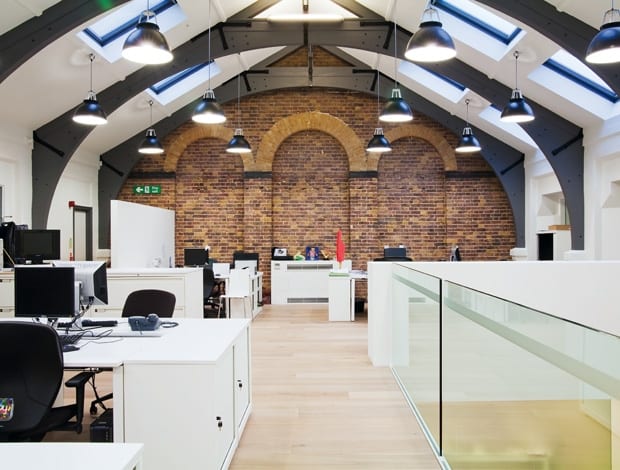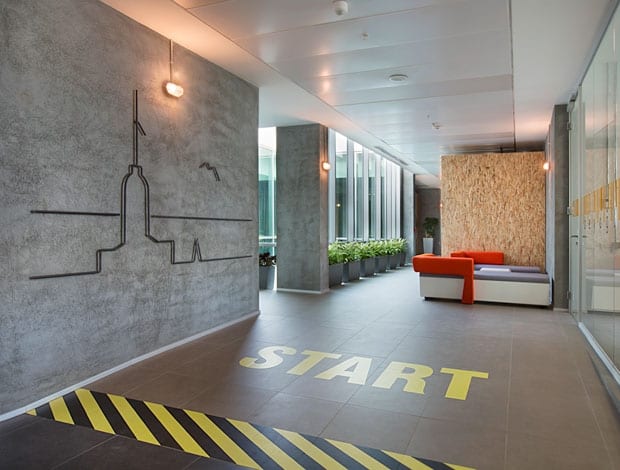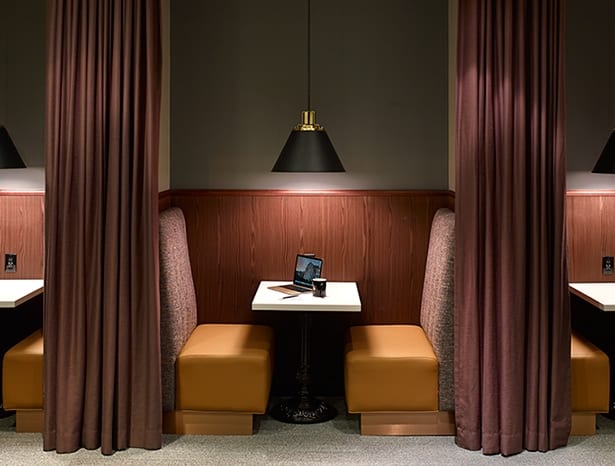 Designer Luca Nichetto|Nichetto’s skeleto-futuristic Robo chair, designed for Offecct|Taffy – meshed-topped tables that create a moiré effect when placed together|The gently undulating Ipe bench, inspired by curved beams found in Japanese temples|Scanditalian: Foscarini’s Tröag light is named after a traditional Swedish wooden bowl|Milan visitors received info on a Nichetti-designed USB stick|Tacchini’s Dressed sofa, whose cushions are sewn into the frame for extra squashiness|The modular Metro sofa, freshly launched for Emmegi|Nichetto’s chairs for Emmegi’s Elle system|Monolithic, faceted Elle tables contrast with the lightness of the range’s chairs||
Designer Luca Nichetto|Nichetto’s skeleto-futuristic Robo chair, designed for Offecct|Taffy – meshed-topped tables that create a moiré effect when placed together|The gently undulating Ipe bench, inspired by curved beams found in Japanese temples|Scanditalian: Foscarini’s Tröag light is named after a traditional Swedish wooden bowl|Milan visitors received info on a Nichetti-designed USB stick|Tacchini’s Dressed sofa, whose cushions are sewn into the frame for extra squashiness|The modular Metro sofa, freshly launched for Emmegi|Nichetto’s chairs for Emmegi’s Elle system|Monolithic, faceted Elle tables contrast with the lightness of the range’s chairs||
Happy to talk about bits of the industry that no one else wants to talk about, the Venetian designer’s take on workplace furniture is no less refreshing
Luca Nichetto strikes a formidable figure at the SaloneUfficio, the bustling office section of the Milan furniture fair. The burly Venetian designer is surrounded by salesmen in suits, huddled together waiting for the next punter to step into their lair.
Nichetto, on the other hand, is perched on a small sofa from his newly launched range for the Italian brand Emmegi. He looks confident. Maybe because he knows his collaborations with the company – lovely little numbers called Metro and Elle – stand out from the mountain of other office chairs, desks and breakout furniture presently being flogged up and down the aisles of the fair.
“What I don’t understand is why the office needs to be so boring,” he says, with his forehead crinkled up in a way that suggests he is genuinely perplexed. “The office needs to be a really nice place – I spend more time there than in my home. The functionality is important but it’s not the first thing. The people need to smile!” With this, Nichetto leans in closer, as if to share a secret. “If I opened the door of my office and found some of this” – he waves his arm out towards the sea of stands – “I’d start to cry.”
It’s a blunt statement, and to be fair, it comes from a designer who doesn’t specialise in workplace products.
The partnership with Emmegi is one of Nichetto’s first forays into the office arena. But what the Metro and Elle ranges have that perhaps some of the competition lacks, is the comfort and svelte charm of furniture that people would want in their homes – not just at work. And this is a quality that’s actually quite rare.Nichetto, 34, has been toiling away in the design industry for over a decade after graduating from the University Institute of Architecture of Venice in 1999, but it wasn’t until recently that he truly established himself among the top ranks, working with premier brands in Italy and Scandinavia.
The stackable, flat-packed Robo chair for Offecct, launched last year in Stockholm, is what seems to have catapulted the designer to the next level.
As well as the Emmegi project, this year in Milan he also turned out pieces for Established&Sons, Foscarini, Casamania, Offecct, Tacchini and Formasarig, among others – and in the past he’s worked with the likes of Skitsch, Venini, Moroso, Kristalia and Bosa. Clearly, the industry has a lot of time for what he does. But far from coming across as a diva designer, slagging off office furniture for the heck of it, he actually just seems honest.
“It’s important for designers to say what we really think and not always be politically correct. If I don’t like something, it shouldn’t be a problem,” he says, shrugging his shoulders. But the difficulty isn’t just with designers, he points out: “Magazines need to be more critical of our work, otherwise we continue to hear ‘these pieces are so nice’ because the company paid for advertising. We need critics.”
Nichetto’s story is slightly different from the usual trajectory of a designer.
He’s from Murano, the small island near Venice that specialises in glass production. His grandfather had been a master glassblower and it was by observing him that Nichetto became interested in the relationship between designers and craftsmen.
“I was really curious to know who these people were arriving with drawings that the company had to produce,” he explains. “I asked many times to my grandfather, ‘who are these people?’ and he’d say, ‘Aah, they are the designers.’” Murano is also the first place he observed how the production process works. “It was normal to see that from one sketch you could do something really quickly with the glass. It’s the same thing for rapid prototyping, in a way.”
After graduating, Nichetto began designing glass products for Milan-based company Salviati – whose art director at the time, Simon Moore, recognised talent in some sketches he was trying to sell for extra money. Moore didn’t produce any of his designs right off the bat but instead offered to teach Nicchetto how to work from a client brief.
“It was a fantastic time for me because a lot of big designers that I knew as a student – Ingo Maurer, Ross Lovegrove, Tom Dixon – were working there at the time,” says Nichetto. “I observed that Ross arrived at meetings with fantastic sketches, Ingo arrived with a small mobile, Tom arrived with amazing renders – so it was also great for me to see in which ways these designers work.”
In 2006, he opened his studio, Nichetto & Partners, back on home turf in Venice, which has kept him close to the manufacturing centres in Italy.
But his work with Nordic companies and his Swedish girlfriend have prompted a second studio in Stockholm, meaning he spends two weeks a month in each city. It’s an arrangement that has clearly had an influence. While his whole collection back through the years is cohesive and shows a willingness to experiment with materials and processes, it isn’t quite identifiable as either Scandinavian or Italian.
“We are now in a global design world, so the influence is everywhere, it’s a big mix,” says Nichetto.
Having said that, the main differences between Italian and Scandinavian manufacturers is not lost on Nichetto. For example, he says that Offecct are very structured, with a clear time schedule for product development, from first sketches through to final prototypes.
“It’s an interesting way for designers to know what’s going on within the process,” he says. “But it can also be limiting because if you don’t find the solution [within the allotted window of time], they stop the product.”
Italian manufacturers are a different story: “We are really, really quick to do everything,” says Nichetto. The lamp that he made for Foscarini this year, called Plass, was only in development for six months. But this approach has its downfalls too. “The Italian companies are sometimes totally wrong in the distribution side of the pieces. In Scandinavia, that would be impossible: they are super focused on the commercial side, so the product is developed together with the marketing. They grow up together.”
Nichetto is happy discuss the nitty-gritty of the industry, and was one of the few high-profile designers to get involved in the Twitter conversation Milan Uncut, which delved into the realities of the royalty system whereby designers are often not paid for their time during development and prototyping, but receive royalties somewhere in the range of three percent once a product goes to market. “When the old masters decided together with the old companies that it would be nice to have
three percent, it was another market – it was 50 years ago. There were probably ten designers and the three percent was perfect. But now, we are a lot of designers and companies, and every year there are a lot of products, so three percent is nothing,” says Nichetto. “An agent would normally take six or seven percent. But without us, he doesn’t sell anything. So the balance is totally wrong.”
Nichetto is doing well for himself, and so hemight be one of the lucky ones who can negotiate a better deal. But he thinks younger designers are in a tough position because, for a start, there are so many of them. A core frustration is that new graduates are more than happy to work for nothing, he says, which makes it difficult for people like him, with larger studios and employees to pay. “I need to get paid for my time, it’s very simple,” he says. In the end, Nichetto believes he’s worked out the best approach – three types of products every year: one commercial, one advertising and one other that he just really wants to do. “If I mix the three, it works out, and I am happy.”































